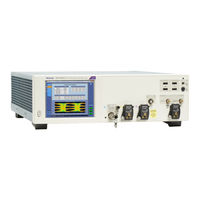Tektronix DPO75902SX Oscilloscope Manuals
Manuals and User Guides for Tektronix DPO75902SX Oscilloscope. We have 3 Tektronix DPO75902SX Oscilloscope manuals available for free PDF download: User Manual, Quick Start User Manual, Installation And Safety Manual
Tektronix DPO75902SX User Manual (230 pages)
Brand: Tektronix
|
Category: Test Equipment
|
Size: 17 MB
Table of Contents
Advertisement
Tektronix DPO75902SX Quick Start User Manual (192 pages)
Oscilloscopes
Brand: Tektronix
|
Category: Test Equipment
|
Size: 18 MB
Table of Contents
Tektronix DPO75902SX Installation And Safety Manual (90 pages)
Brand: Tektronix
|
Category: Test Equipment
|
Size: 0 MB
Table of Contents
Advertisement


